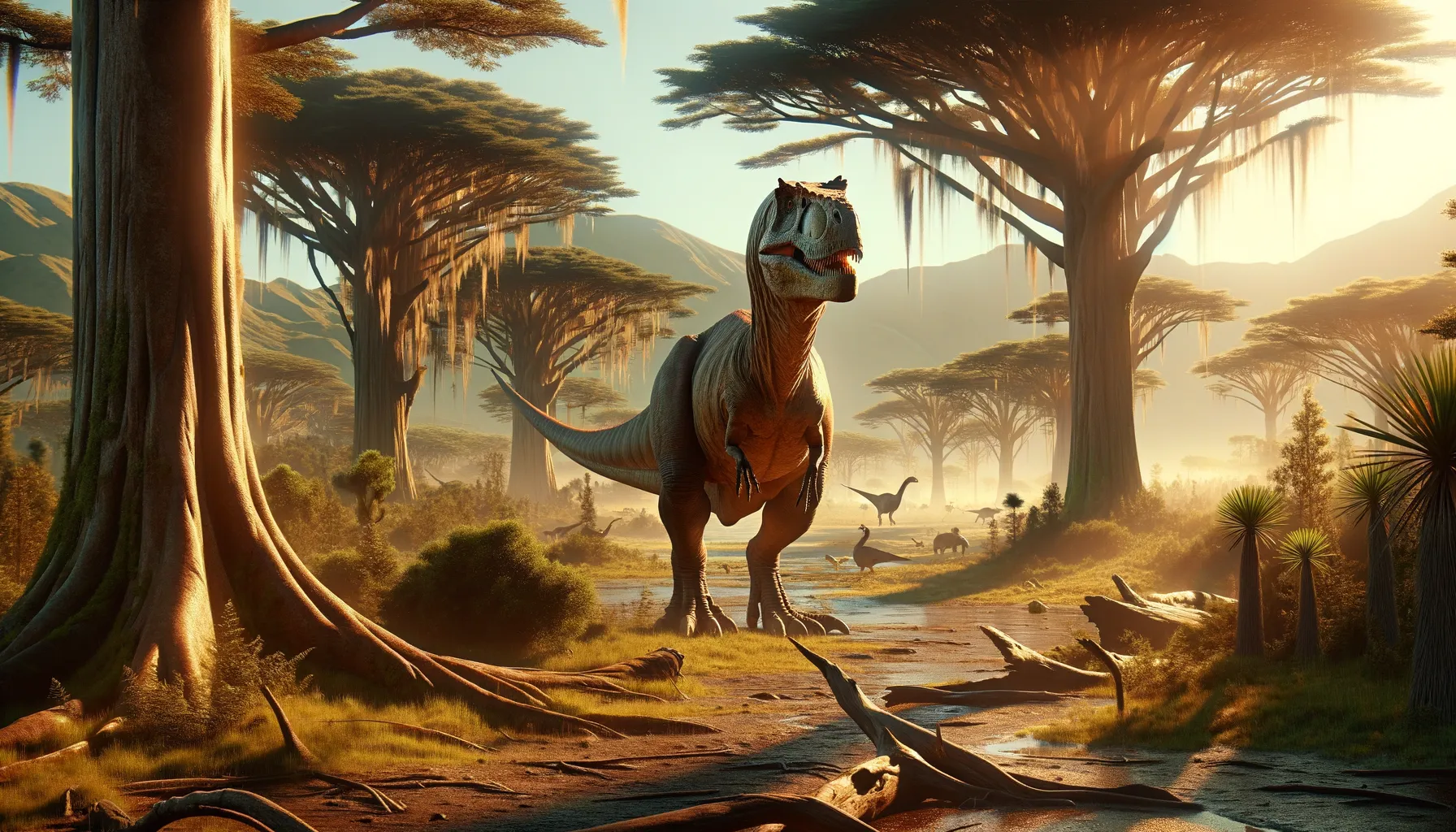
Quilmesaurus
Swift hunter of ancient landscapes.
Period
Cretaceous
Length
Roughly 5 to 6 meters in length.
Height
About 2 meters tall at the hip.
Weight
Approximately 500 kilograms.
Quilmesaurus was a theropod dinosaur that roamed parts of what is now Argentina during the Late Cretaceous period. This carnivorous dinosaur was likely a skilled predator due to its moderate speed and agile movements. Its fossil remains provide important insights into the diversity and evolutionary history of theropods in South America. Although not the largest theropod, it played a significant role in its ecosystem as an efficient hunter.
Diet
Quilmesaurus was carnivorous, primarily feeding on smaller dinosaurs and possibly scavenging when necessary. Its teeth and jaw structure suggest an adaptation for slicing through meat, indicating a diet focused on flesh.
Hunting
As a mid-sized predator, Quilmesaurus likely relied on its moderate speed and agility to ambush prey. It may have hunted alone or possibly in small groups to increase efficiency when targeting larger animals.
Environmental challenges
During the Late Cretaceous, Quilmesaurus faced a changing world with fluctuating climates and landscape alterations. The extinction of certain species or competition from other predators might have forced Quilmesaurus to adapt its hunting strategies. Environmental changes, such as varying plant growth and water availability, also impacted prey abundance, challenging its survival.
Speed
Moderate runner, estimated at 25 mph.
Lifespan
Possibly around 20 to 30 years.
First discovery
Found in Argentina in 1986 by Oscar de Barrio.
Fun Facts
- Quilmesaurus was a carnivorous dinosaur that lived during the Late Cretaceous period, around 70 million years ago.
- It is named after the Quilmes people, an indigenous group from Argentina where its fossils were found.
- Scientists believe Quilmesaurus was a theropod, which means it walked on two legs and had hollow bones.
- This dinosaur is known from only a few fossilized bones, making it a mystery for paleontologists who are trying to understand more about its appearance and lifestyle.
- Quilmesaurus might have been related to the more well-known Abelisauridae family, which includes other predatory dinosaurs.
- The partial remains suggest that Quilmesaurus was a medium-sized predator, possibly hunting smaller dinosaurs or scavenging for food.
- Despite its limited fossil record, Quilmesaurus helps scientists piece together the ecosystem of ancient South America during its time.
Growth and Development
Quilmesaurus likely hatched from eggs, growing rapidly to reach maturity. Juveniles might have relied on stealth and agility to avoid larger predators while learning hunting techniques. As they matured, they developed stronger, more robust frames, enabling them to tackle larger prey.
Habitat
Quilmesaurus lived in a semi-arid environment with periodic access to water sources, which supported various plant and animal life. Its habitat ranged from open plains to forested areas providing shelter and hunting grounds. This diverse landscape offered ample hunting opportunities and resources for survival.
Interaction with other species
Quilmesaurus coexisted with various herbivorous dinosaurs, often serving as a predator in the food chain. It might have competed with other theropods for similar prey, leading to niche differentiation. Interactions with scavengers or opportunistic feeders could have also occurred as Quilmesaurus left behind remains of its meals.
Natural lifespan
Naturally, it could live around 20 to 30 years.
Reproduction
Reproduction involved laying eggs, possibly in nests built in secluded areas. Parents might have guarded the nest to protect eggs from predators. Little is known about parental care, but like many theropods, young Quilmesaurus were likely independent soon after hatching.
Social behaviour
While specific social behaviors are unclear, Quilmesaurus might have displayed solitary or small group dynamics typical of many theropods. Social interactions could have involved mating rituals or territorial disputes with competitors.
Fossil locations
Fossil remains of Quilmesaurus have primarily been found in Argentina's Patagonia region. These discoveries contribute to our understanding of Cretaceous theropods in South America. Fossil evidence remains somewhat limited, with only a few specimens described in detail.
